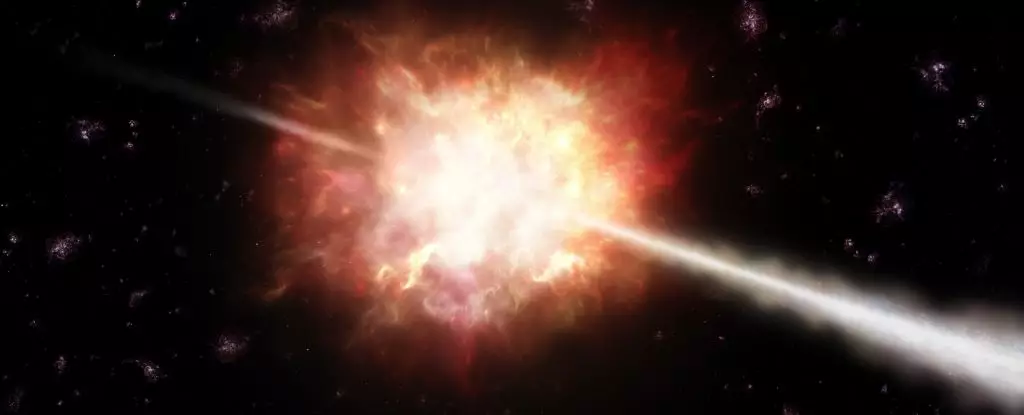The birth of the Universe, following the Big Bang, was marked by the presence of mainly hydrogen and a few helium atoms. However, over the course of 13.8 billion years, elements heavier than helium were produced through various processes. While stars played a significant role in the creation of heavier elements through nuclear fusion, there are certain elements that could not have been formed by this method. This has led scientists to explore other phenomena, such as gamma-ray bursts (GRBs), as potential sources of heavy elements in the Universe.
Gamma-ray bursts (GRBs) are considered to be the most powerful explosions in the Universe, with some erupting with a luminosity a quintillion times that of our Sun. These bursts are classified into two categories – long bursts and short bursts. Long GRBs are associated with the deaths of massive, fast-rotating stars, while short bursts are believed to be caused by the collision of two neutron stars.
In August 2017, the detection of a signal by the Ligo and Virgo gravitational wave detectors led to the discovery of GRB 170817A. This event provided important insights into the production of heavy elements in the Universe. The observations following GRB 170817A revealed the presence of a kilonova, which is a less intense version of a supernova explosion. The study of this event indicated the production of heavy elements during the kilonova, challenging previous notions about the limits of nuclear fusion in element production.
The rapid neutron-capture process (r-process) is a crucial mechanism in the formation of heavy elements beyond iron in the periodic table. This process involves the rapid capture of neutron particles by nuclei, leading to the creation of heavier elements. Gamma-ray bursts provide the ideal conditions for the r-process to occur, as they offer high density, high temperature, and an abundance of free neutrons.
While the merger of two neutron stars, as seen in the case of GRB 170817A, can provide insights into the production of heavy elements, such events are rare. Recent studies on long GRBs, such as GRB 221009, have shown that despite their extreme brightness, they may not necessarily result in the production of heavy elements through the r-process. Observations from the James Webb Space Telescope (JWST) have indicated that the brightness of a GRB does not always correlate with the conditions necessary for the r-process to take place.
The quest for understanding the origins of heavy elements in the Universe is ongoing. While gamma-ray bursts have been proposed as potential sources, recent findings suggest that there may be other sources yet to be discovered. The mystery of the abundance of heavy elements in the Universe remains, prompting scientists to explore new avenues and expand our knowledge of cosmic phenomena.
The study of gamma-ray bursts and their potential role in the production of heavy elements in the Universe has unveiled fascinating discoveries and challenges. While these bursts offer valuable insights into the processes that shape our cosmos, there is still much to learn about the origins of the elements that make up the world around us. The journey towards unraveling the mysteries of the Universe’s composition continues, driving scientific exploration and curiosity to new heights.


Leave a Reply